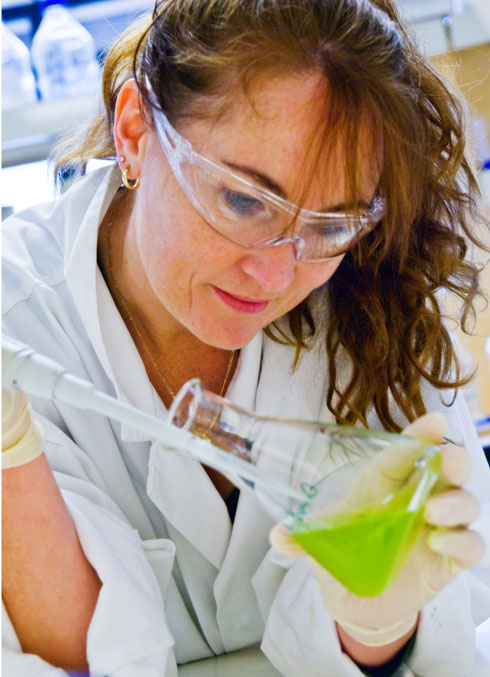Copper Uptake, Intracellular Localization and Speciation in Marine
Microalgae Measured by Synchrotron Radiation X-Ray Fluorescence and
Absorption Microspectroscopy
Merrin S. Adams,*†‡ Carolyn T. Dillon,‡
Stefan Vogt,§
Barry Lai,§
Jennifer Stauber,†
and Dianne F.
Jolley *‡
†
Centre for Environmental Contaminants Research, CSIRO Land and Water Flagship, Locked Bag
2007, Kirrawee 2232, New South Wales, Australia
‡
School of Chemistry, University of Wollongong, Wollongong 2522, New South Wales, Australia
§
X-ray Science Division, Advanced Photon Source, Argonne National Laboratory, Argonne, Illinois
60439, USA
*
Corresponding authors.
M. Adams; Merrin.adams@csiro.au, phone +61 2 9710 6831, fax +61 2 9710 6800
D. Jolley; djolley@uow.edu.au, phone +61 2 4221 3516
ABSTRACT
Metal toxicity to aquatic organisms depends on the speciation of the metal and its binding to the
critical receptor site(s) (biotic ligand) of the organism. The intracellular nature of the biotic ligand
for Cu in microalgal cells was investigated using the high elemental sensitivity of microprobe
synchrotron radiation X-ray fluorescence (SR-XRF) and X-ray absorption near-edge spectroscopy
(XANES). The marine microalgae, Ceratoneis closterium, Phaeodactylum tricornutum and
Tetraselmis sp. were selected based on their varying sensitivities to Cu (72-h 50% population
growth inhibitions of 8 to 47 µg Cu/L). Intracellular Cu in control cells was similar for all three
species (2.5-3.2×10-15 g Cu/cell) and increased four-fold in C. closterium and Tetraselmis sp. when
exposed to copper, but was unchanged in P. tricornutum (72-h exposure to 19, 40 and 40 µg Cu/L,
respectively). Whole cell microprobe SR-XRF identified endogenous Cu in the central compartment
(cytoplasm) of control (un-exposed) cells. After Cu exposure, Cu was co-located with
organelles/granules dense in P, S, Ca and Si and this was clearly evident in thin sections of
Tetraselmis sp. XANES indicated coexistence of Cu(I) and Cu(II) in control and Cu-exposed cells,
with the Cu ligand (e.g. phytochelatin) in P. tricornutum different to that in C. closterium and
Tetraselmis sp. This study supports the hypothesis that Cu(II) is reduced to Cu(I) and that
polyphosphate bodies and phytochelatins play a significant role in the internalisation and
detoxification of Cu in marine microalgae.
Dianne Jolley Bio Overview
Prof Dianne Jolley in an environmental chemist and toxicologist leading a dynamic research group which is investigating the assessment and prediction of toxicity. This research includes establishing field-based tools to assess the risk of contaminants in aquatic and agricultural systems; investigating the biological impacts of contaminants and using the outcomes to critically inform the science that underpins the water and sediment quality guidelines; and probing the mechanisms of contaminant toxicity and biomarkers to diagnose this toxicity. Our research spans the tropics, temperate and polar regions in both freshwater/terrestrial and coastal marine systems. We have well-established collaborations with government and industry, including CSIRO Land and Water and the Australian Antarctic Division.
Publications
https://magazine.uow.edu.au/research/woi/UOW214889.html
https://scholar.google.com.au/citations?user=D_r63WMAAAAJ&hl=en
https://magazine.uow.edu.au/research/woi/UOW214889.html
https://www.adscientificindex.com/scientist/dianne-f-jolley/121276
